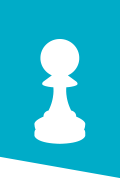Having gone from nothing to becoming the most dominant computing platform in a little over 10 years, mobile has arguably been the fastest moving element of the Digital Revolution. By examining mobile’s trends, successes, shortcomings, and pitfalls, we can apply those to other areas of digital, as well as business and our lives in general. Here are my three lessons from the Mobile Revolution:
- Design for the User
Greater than just a technology shift, mobile represents a re-imagining of how we interact with each other, companies and services to create a better-shared experience. These new experiences are driving behavioural shifts. Today the modern employee uses three or more devices for work, while most businesses have multiple operating systems (despite most being Windows-only houses for many years). The vast majority of employees now even use non-approved software, such as web-accessed SaaS (Software as a Service) like Dropbox.
This is due to a fundamental inversion of expectations; consumers and employees now expect consumer-grade experiences from the enterprise. This is a dramatic shift from the previous 50 years when the enterprise didn’t just lead IT, but was the only IT! The only way to address this disparity in user experience is to engage the user in a more thoughtful design process, based on end users rather than process owners, habits rather than best practices, and services and interactions rather than technology.
- Create ecosystems with a collaboration-first mindset
Twitter has had incredible staying power, despite staying remarkably true to its core functionality — the 140 character. But Twitter would not exist today without its open API strategy. (For those that don’t fully understand APIs (application program interfaces) — I highly recommend doing some reading as they will be the technological basis for much of our economy for years to come). By creating a slew of open APIs, Twitter, and many other companies, are beginning to build up an ecosystem of applications around them — some their own and some third party (e.g. Apps that integrate with Apple’s HealthKit). By creating an ecosystem of applications a business can provide a broader and more innovative range of services, and become far more difficult to supplant.
This concept is at the heart of the open source movement — collaboration of many and varied participants has been shown to be more effective than single monolithic (or monocultural or homogeneous) entities. No-one will want to buy in wholesale to a single supplier for their life, so suppliers need to be open to collaborate. The Internet of Things provides another example of this; you don’t want to buy your phone, your kettle, your fridge, your windows, and your flower pots all from one company; you want to mix and match the best available and trust that they will all play together.
- New technology = new business models = new opportunities = new competition
Large incumbents are more under threat than ever from being disrupted by new technology. I’ll take a risk by attempting to quantify the rather nebulous term “digital disruption”; technology will create new business models that large companies can’t adapt to, and thus they will become utterly irrelevant in the marketplace.
However, as a big company with an existing and profitable business model, you have three options whenever a new piece of technology comes along; ignore it, understand it, or exploit it. It’s important to note here that “technology” does not mean “gadgets”. Instead, take a step back and consider connected devices, and their underlying technologies in general:
- Drones have significant commercial and enterprise applications. Understanding the potential impact on supply chain, field work in dangerous terrain, as well as fulfilment of user requests, entertainment and filmmaking.
- There is a strong argument to be made that augmented reality, via wearables or biological augments, is the future of the user interface, eventually supplanting the phone and the smart watch as the most direct method of communication between people, and between employees and their company.
The challenge is now to bring that thinking into the rest of digital, the business, end users, customers, and beyond.
Written by Howard Rees, Mobility Consultant at CSC, as part of the Young MCA Update.


